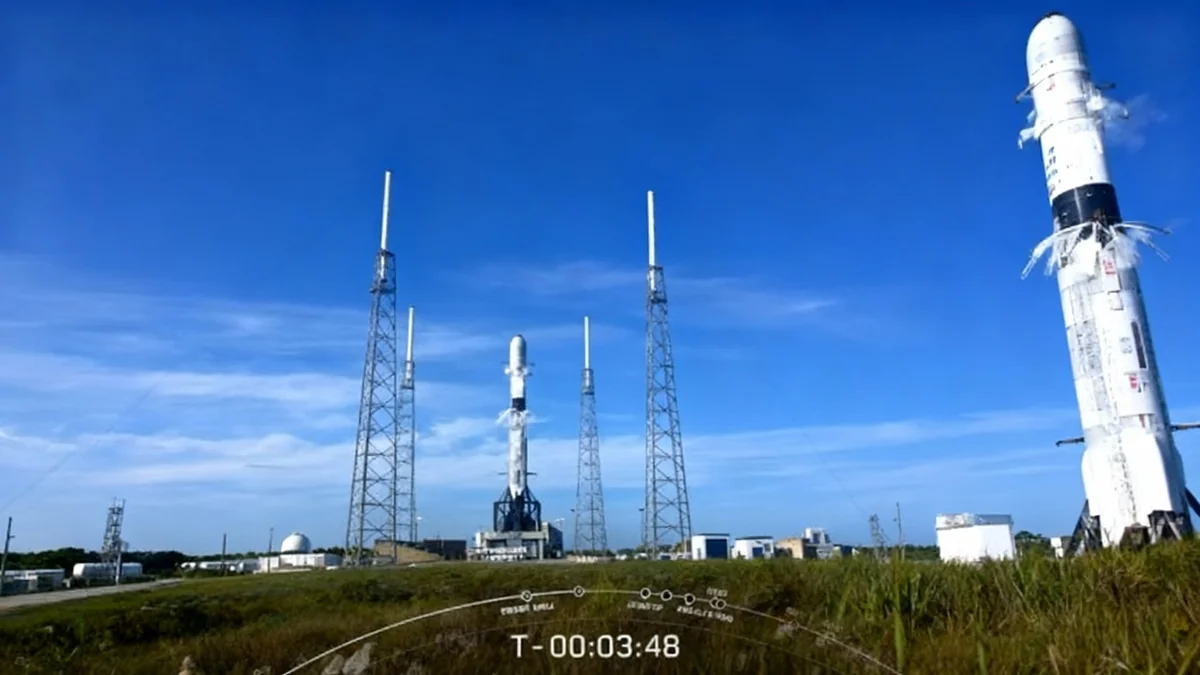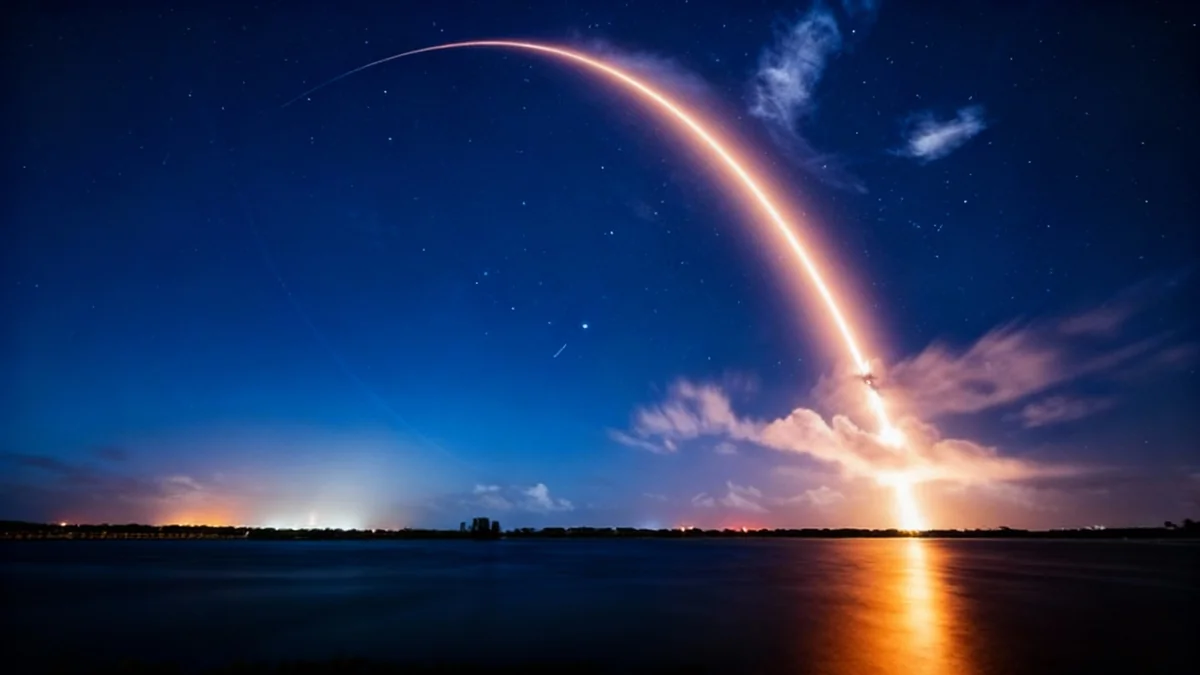SpaceX is preparing to launch a Falcon 9 rocket from Florida's Space Coast on Sunday, October 19, 2025. This mission is notable because the first-stage booster being used will be making its 31st flight, setting a new reusability record for the company's fleet. The launch is scheduled for a window opening at 1:40 p.m. EDT from Cape Canaveral Space Force Station.
Key Takeaways
- Record Flight: A Falcon 9 booster will fly for a record 31st time.
- Mission Details: The Starlink 10-17 mission will carry 28 satellites into orbit.
- Launch Information: Liftoff is scheduled for Sunday, October 19, from Cape Canaveral's SLC-40, with a launch window from 1:40 p.m. to 2:52 p.m. EDT.
- Weather Conditions: Favorable weather is expected, with a greater than 95% chance of good conditions.
- Booster Recovery: The booster is planned to land on the droneship 'A Shortfall of Gravitas' in the Atlantic Ocean.
Mission Details for Starlink 10-17
The primary objective of the Starlink 10-17 mission is to deploy another batch of satellites for SpaceX's growing internet constellation. This flight will add 28 satellites to the network, which aims to provide high-speed internet access to underserved areas globally. The mission will lift off from Space Launch Complex 40 (SLC-40) at Cape Canaveral Space Force Station.
The launch window is relatively short, running for just over an hour from 1:40 p.m. to 2:52 p.m. Eastern Daylight Time. This precision is typical for missions requiring specific orbital insertions. According to the U.S. Space Force's Space Launch Delta 45, weather conditions are nearly perfect for the attempt, with a forecast showing a greater than 95% probability of favorable weather at launch time. This high probability minimizes the risk of weather-related delays.
The Role of the Space Coast
Florida's Space Coast remains a critical hub for orbital launches. This upcoming flight will mark the 86th orbital launch from the region in 2025 alone. SpaceX has been responsible for the vast majority of these, conducting all but five of the launches this year, which highlights the company's dominant role in the launch industry.
A New Milestone in Rocket Reusability
The central story of this launch is the Falcon 9 first-stage booster. This will be its 31st mission, a significant achievement in aerospace engineering. The ability to reuse rocket boosters is a core component of SpaceX's business model, as it drastically reduces the cost of accessing space. Each successful recovery and reuse demonstrates the reliability and durability of the Falcon 9 hardware.
Following stage separation, the booster will perform a series of burns to guide itself back through Earth's atmosphere. It is scheduled to land on the autonomous droneship A Shortfall of Gravitas, which will be positioned in the Atlantic Ocean. A successful landing would mark another step forward in the company's reusability program.
500 Landings and Counting
SpaceX recently celebrated a major milestone by successfully landing a Falcon 9 booster for the 500th time. The first successful booster recovery occurred in 2015, and in the years since, the company has refined the process into a routine part of its launch operations.
Pushing the Limits of Booster Lifespan
When SpaceX first began recovering boosters, the goal was to prove the concept could work. Now, the focus has shifted to understanding the operational limits of the hardware. The company has several boosters in its fleet that are approaching 30 flights. The long-term goal is to certify these boosters for as many as 40 flights each, further reducing costs and increasing launch availability.
This incremental approach to extending the life of its rockets provides valuable data for engineers. Each flight, landing, and refurbishment cycle offers insights into material stress, engine wear, and overall system performance. This data is crucial not only for the Falcon 9 program but also for the development of future launch vehicles.
The Broader Context of SpaceX's Strategy
While the Falcon 9 has been a revolutionary vehicle, it is part of a larger, more ambitious vision for the company. The current Falcon 9 design features a reusable first stage, but the second stage, which carries the payload into its final orbit, is still expendable. This means a significant portion of the rocket is discarded on every mission.
SpaceX's ultimate goal is a fully reusable launch system. This vision is embodied in its next-generation rocket, Starship, which is currently under development in Texas. The Starship system consists of the Super Heavy booster (the first stage) and the Starship spacecraft (the upper stage). Both are designed to be fully and rapidly reusable.
The Future with Starship
The Starship system is designed to land both its first and second stages back at the launch site, a process that would eliminate the need for droneships and further streamline operations. If successful, Starship could fundamentally change the economics of spaceflight, making it possible to launch heavier payloads more frequently and at a fraction of the cost of today's rockets.
The lessons learned from flying the Falcon 9 fleet hundreds of times are directly applicable to the Starship program. The experience gained from engine reuse, thermal protection systems, and autonomous landing software is all being leveraged to accelerate the development of a fully reusable system. Therefore, each record-setting Falcon 9 flight is not just a milestone for the current fleet but also a stepping stone toward a more ambitious future of space exploration and settlement.





